Forex livened up a little last night as weakening Chinese data injected frisson. DXY firmed as EUR fell:
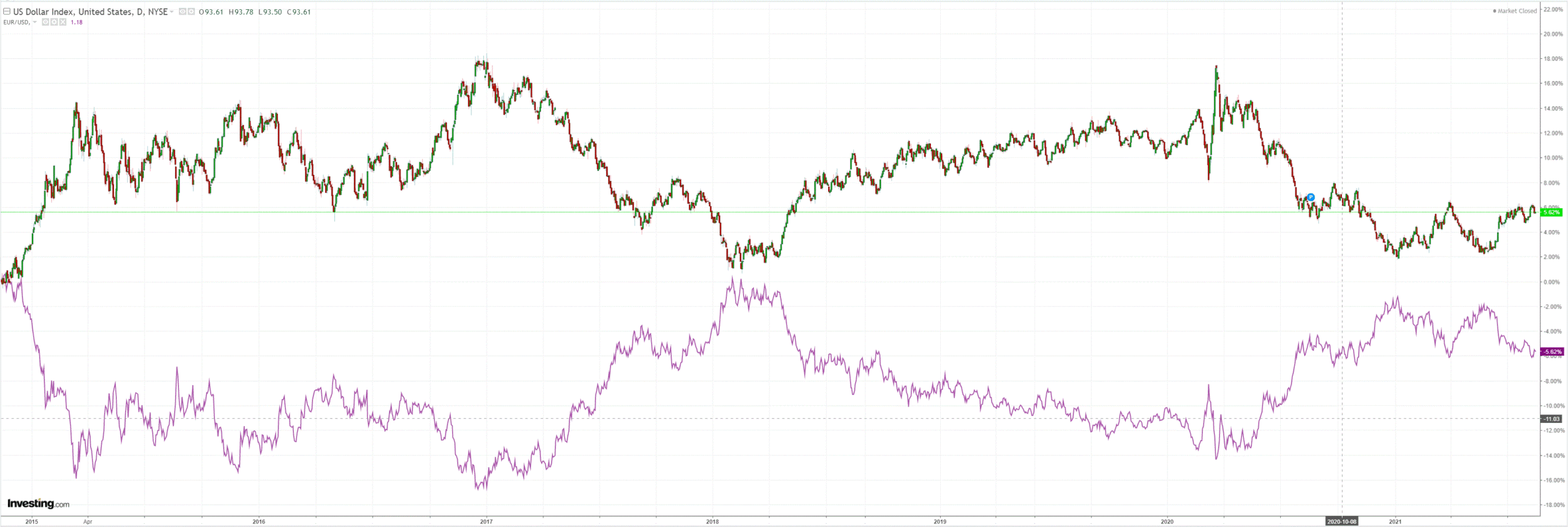
The Australian dollar was puked lower on all crosses, especially JPY. Verus USD it looks poised to break lower:
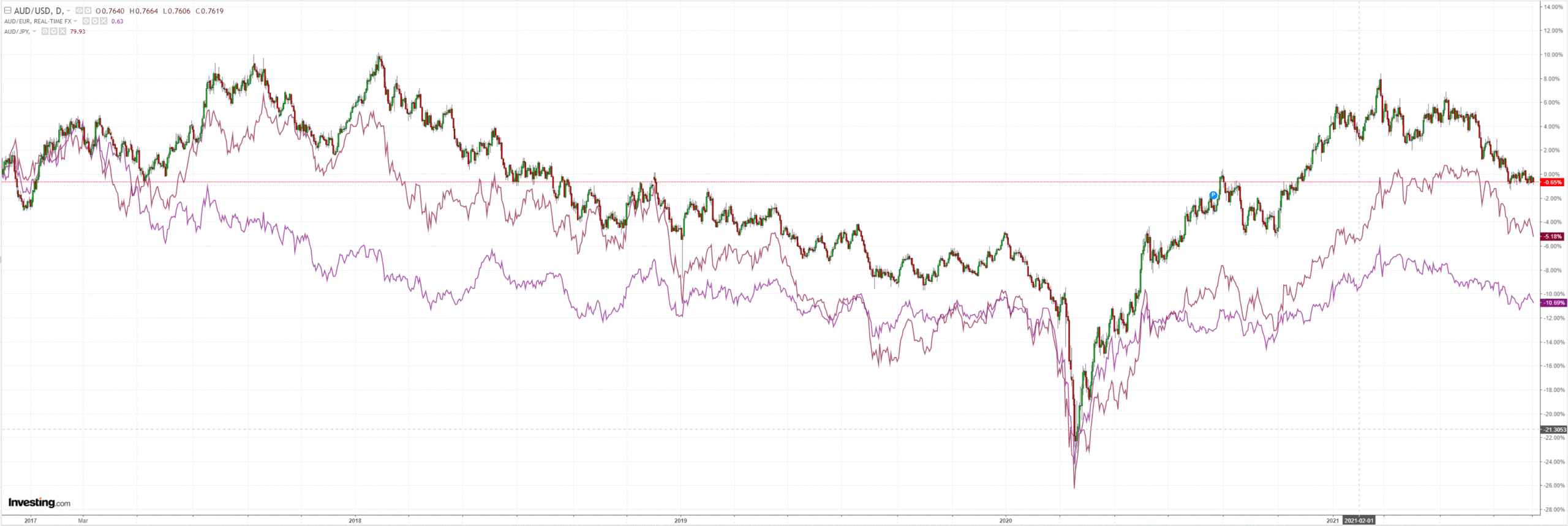
Gold lifted as oil was whacked:
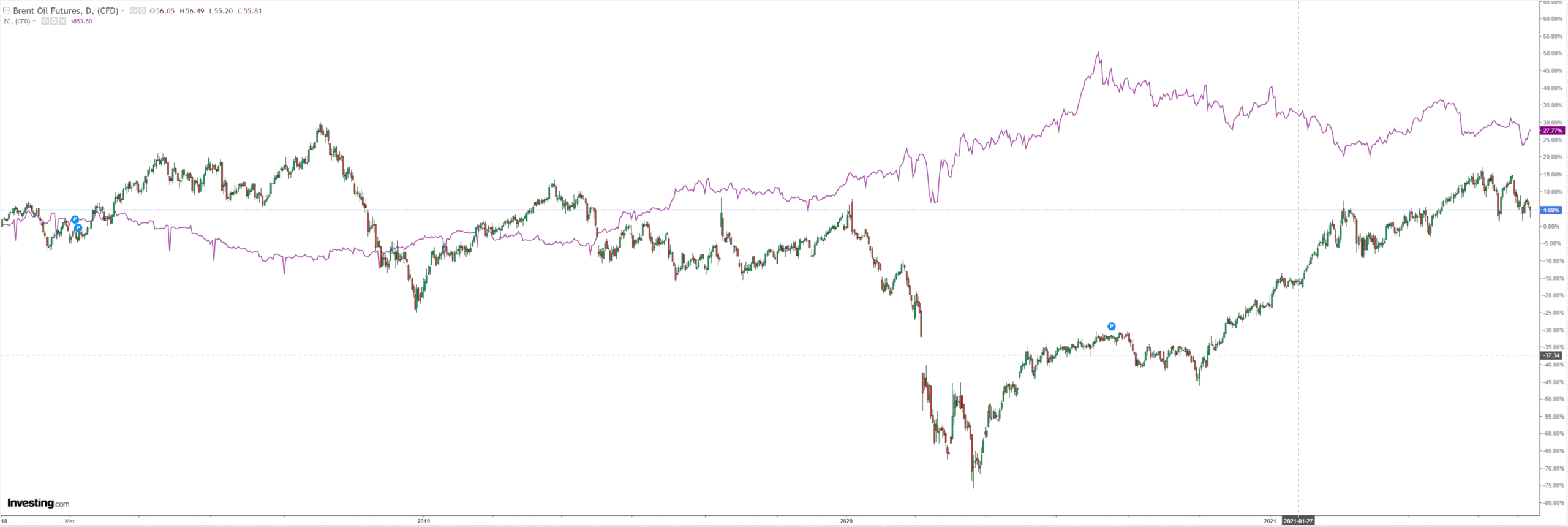
Base metals were soft:
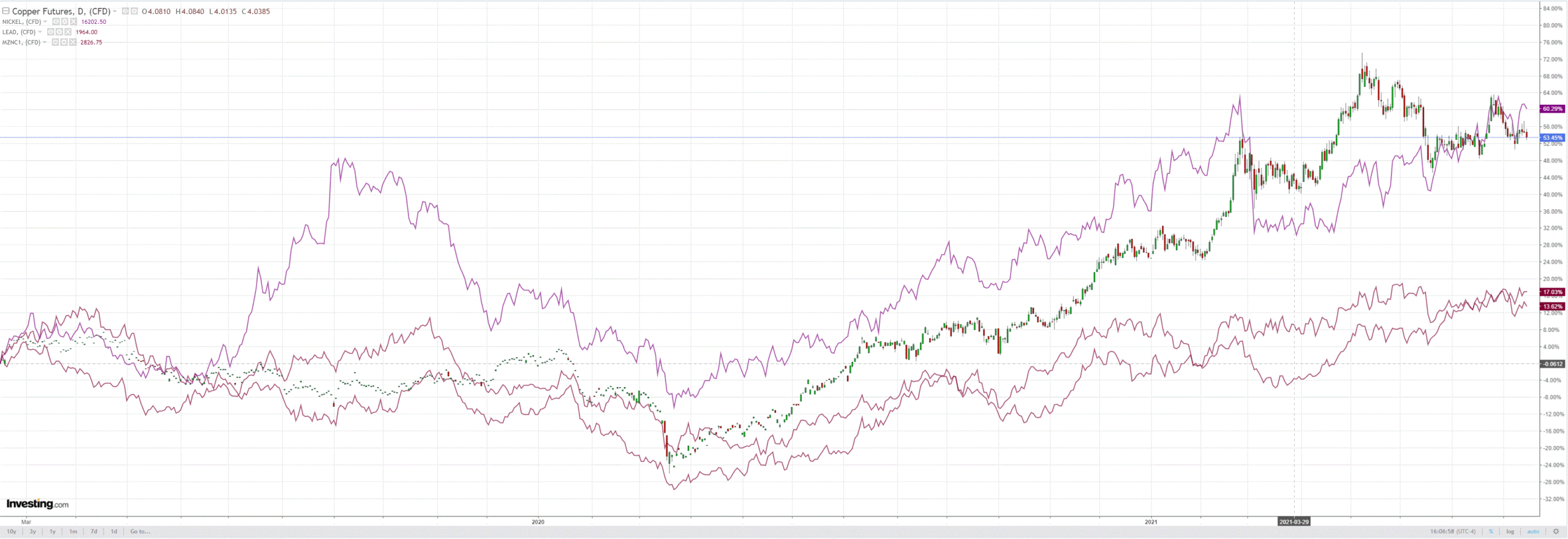
Miners fell:
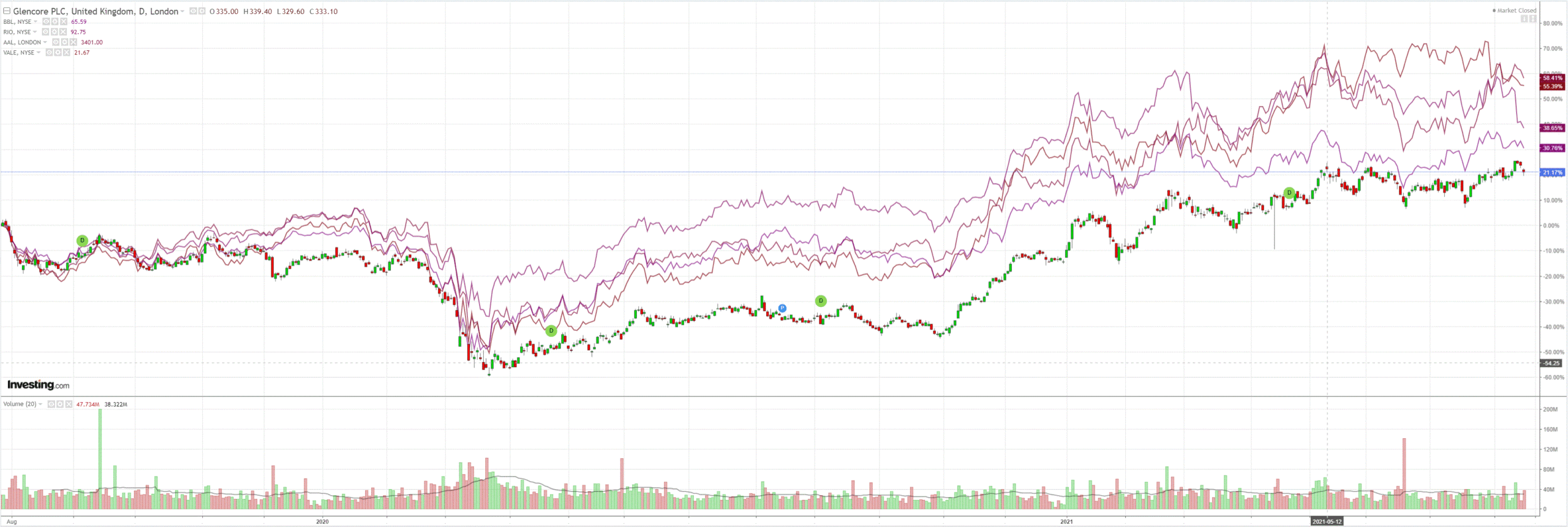
EM stocks are slipping off the cliff:
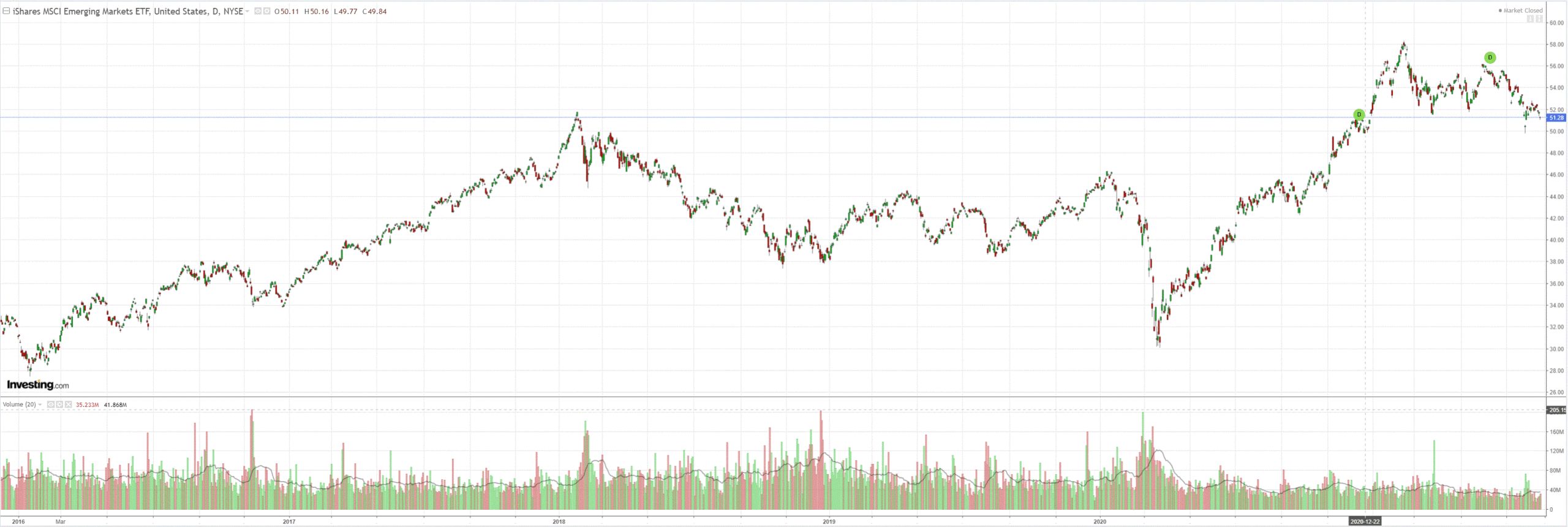
But junk is OK again:
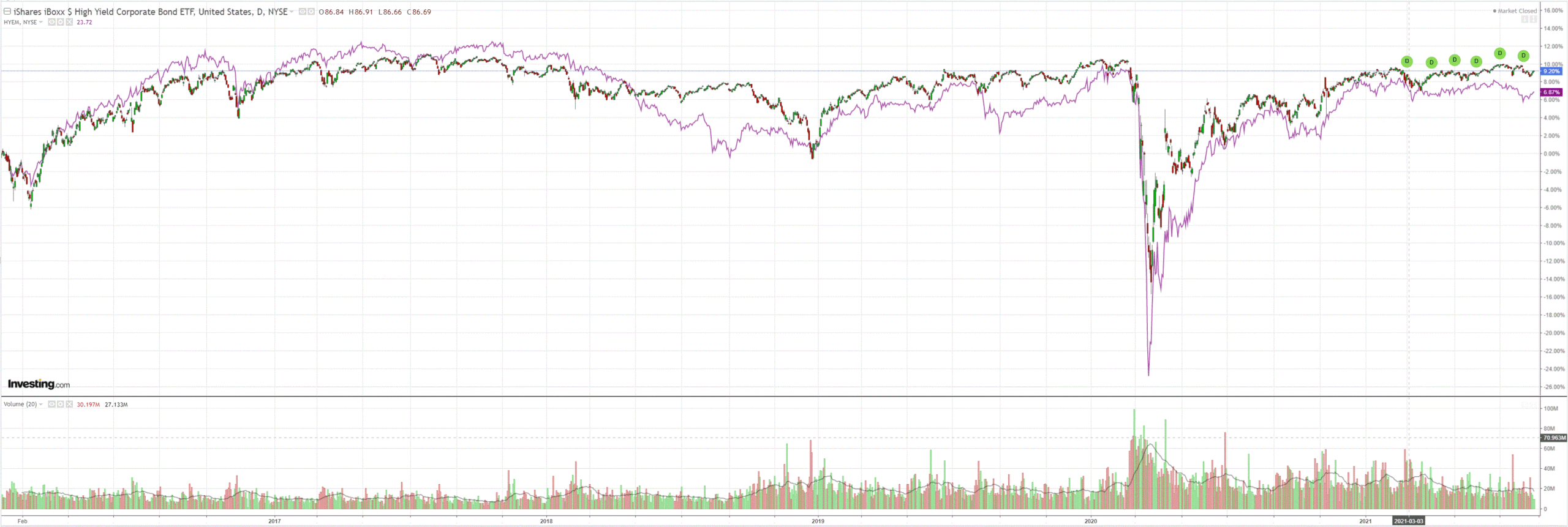
Thanks to a puking yield curve:
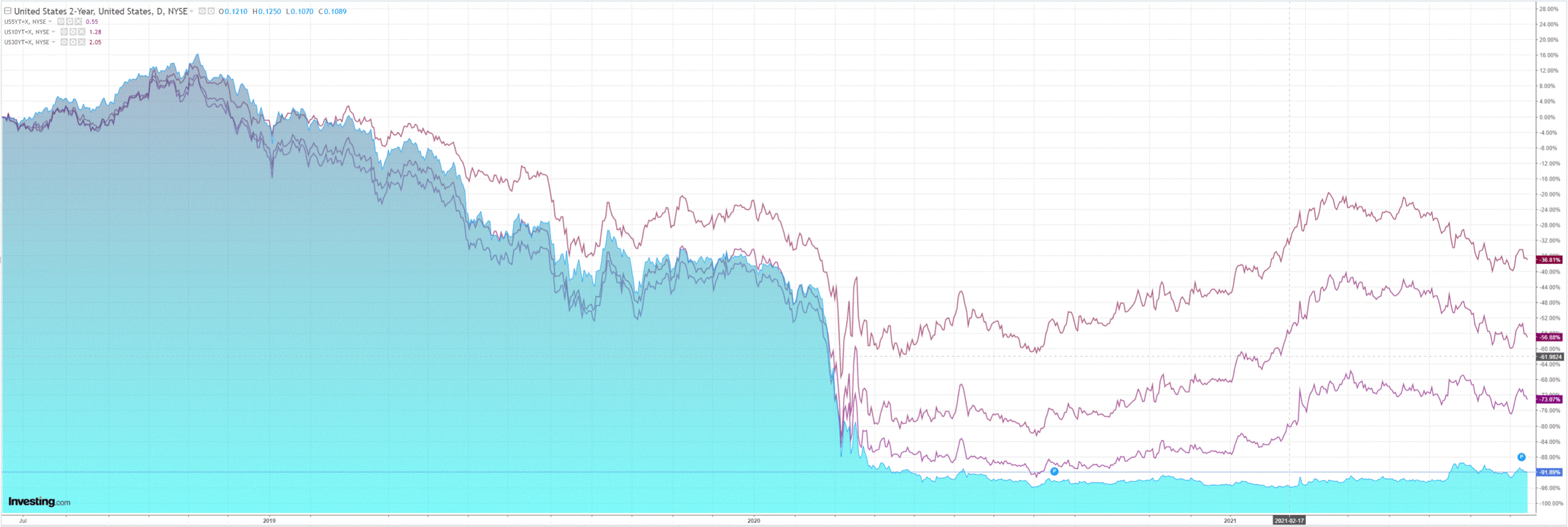
Which lifted stocks, led by FAAMG:
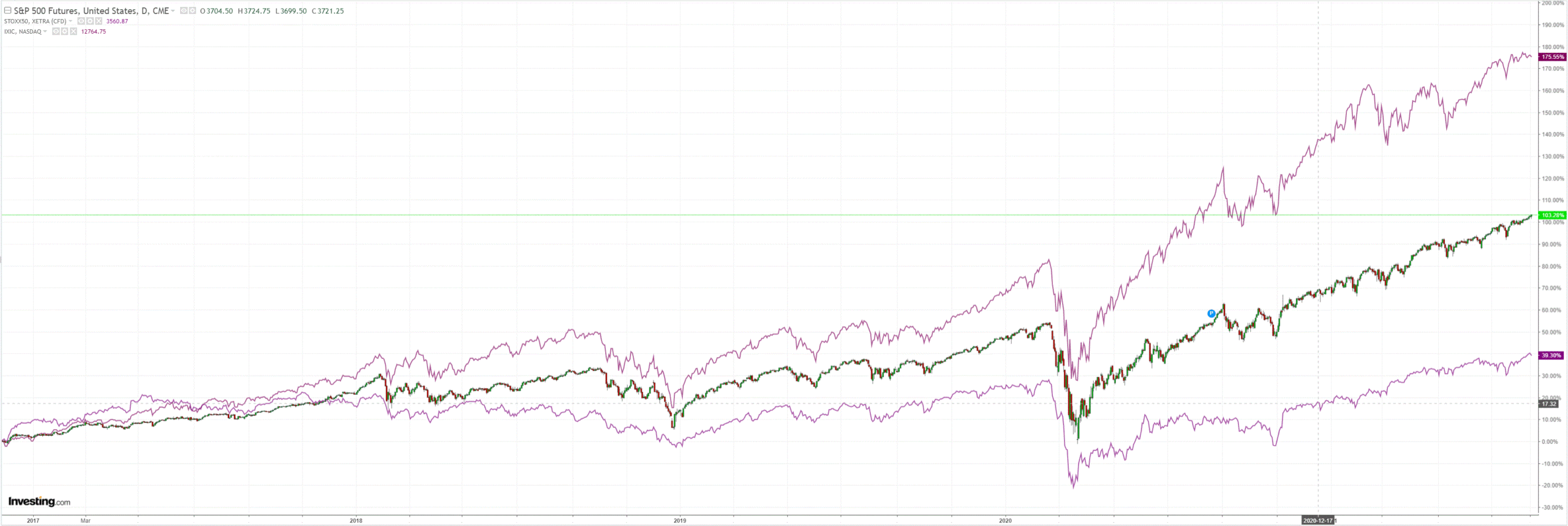
Westpac has the data:
Event Wrap
The New York Federal Reserve’s business survey (Empire State) fell from July’s record high of 43.0 to 18.3. The components were mixed, indicating a loss of growth momentum amid supply chain disruptions, low inventories, and high prices.
Event Outlook
Australia: In the August RBA minutes, the market will be looking for further colour around the bond purchase decision.
New Zealand: We expect whole milk powder prices to fall 1.0% at the upcoming dairy auction, continuing the run of price declines.
Euro Area: The second read of Q2 GDP is set to confirm the initial print of 2.0%qtr.
UK: TheJune ILO unemployment rate is expected to hold at 4.8%, with the extended furlough scheme continuing to provide support to the labour market.
US: The market anticipates that July retail sales will soften by -0.2%, with the reopening likely to spur a consumer shift to leisure spending. This shift is expected to factor into July industrial production as demand cools for manufactured goods (market f/c: 0.5%). June business inventories will be published; inventoriesproved a significant drag on Q2 GDP, but they should begin to rebuild over coming months (market f/c: 0.8%). The August NAHB housing market index should reflect continuing homebuilder optimism, despite headwinds from rising input costs (market f/c: 80). Finally, Fed Chair Powell will be hosting a town hall with educators.
JPM captures the mood:
The antipodeans continue to trade soft in the face of a weak USD elsewhere on Friday, but given the recent developments, I’m biased to side with the signal in this space. As per our JPM research, Key Currency Views, growth has been downgraded by morethan1 sigma in 25% of countries in the past quarter. Clearly Chinese growth is a concern, commodities (iron ore especially) have fallen significantly, confidence numbers are collapsing and to make it worse, there is now more concern over the length of time since being double vaccinated and the protection that offers from the Delta variant, bringing COVID concerns back to the table. This feels like an environment to stick with USD longs, particularly vs AUD where positioning should be cleaner after the post RBA clear out and NZD where the market is long looking for RBNZ hikes. We will hear from the RBNZ this week where they are expected to start their hiking cycle, with more than 25bps are priced into this meeting. The RBNZ are erratic at the best of times so I’m not surprised that the market is talking about a 50bp hike given the strength of the data and the concern over rapidly rising house prices. But for me this could easily be a communication misunderstanding and the use of the word ‘now’ with respect to reducing monetary accommodation in their last policy statement could’ve been in reference to ending QE rather than hiking rates imminently. They’ve recently strengthened the macro pru measures which should work to slow the housing market down if they don’t hike rates and the growth picture in Asia is very concerning given what’s going on with Chinese data, delta, partial shut downs etc. My base case is that they hike 25bps but my plan is to play NZD shorts around the meeting looking for a disappointment of market expectations.

